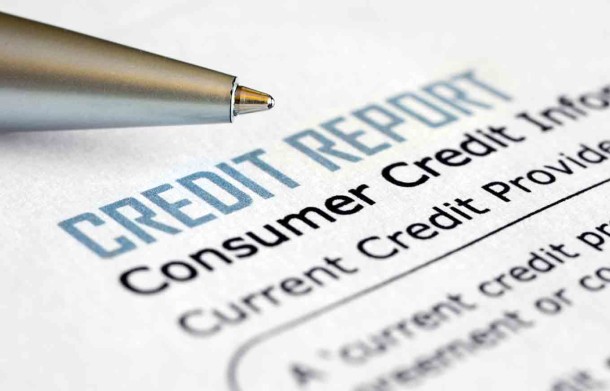You’ve found your dream house, worked out the numbers, and all you need now is to secure a loan from a bank. But what if it’s rejected?
When you apply for a loan, there’s a chance the bank might reject your application, and that’s not something you want to hear when you’re that close to getting your dream home.
While you can’t be 100% sure that the bank will approve your application for a housing loan, you can significantly increase your chances by following these tips!
1. Healthy Credit Reports

One of the first things a bank will check on when you apply for a housing loan in Malaysia is what your credit reports look like.
It’s one of the ways for banks to know that you can pay back whatever you’re borrowing.
They’ll refer to the information provided by credit reporting services such as CCRIS and CTOS, which tells them if you’re in good financial standing or not.
1(a) What Is CCRIS?
CCRIS stands for Central Credit Reference Information System.
It’s a system created by the Credit Bureau of Bank Negara Malaysia (BNM), that provides standardised credit reports on a potential borrower.
1(b) What Kind Of Information Is In My CCRIS Report?
BNM is provided with updates every month from other banks, insurance providers, and utility companies to compile the information that comprises your CCRIS report.
It’s a piece of document that looks like this:
Source: Credit Bureau, Bank Negara Malaysia.
A CCRIS report consists of information such as:
- Outstanding Credit(s): This is a summary of all your outstanding loans and credits. including those related to joint borrowing, and relevant business or commercial loans.
- Special Attention Account(s): These are impaired loans that have been flagged by a financial institution for special monitoring due to fallen creditworthiness of the borrower. This means that special measures have to be taken in order to recover that loan.
- Application(s) for Credit: All of your pending credit applications, whether approved or rejected in the past 12 months.
All outstanding monthly instalments will be recorded in column N that says “Installment in Arrears for Last 12 Months”.
For example, if there are 2 different outstanding instalments in January, you’ll be accounted for 2 credit score under that month. Your total credit score of the year will be the accumulated outstanding credits every month.
In short, the higher your credit score is, the less likely you’ll be approved for a bank loan.
To get your CCRIS report, you may either:
- Request in person – You can request a copy of your credit report in person at the BNM Head Office and BNM Regional Offices.
- You must present an application form along with a copy of your MyKad and requested supporting documents such as driving licence or passport. Alternatively you can access this report automatically using a kiosk at participating BNM branches. Simply insert your MyKad into the credit kiosk, provide your thumbprint, and once your identity has been verified, you can print a CCRIS report.
- Request by correspondence – You can mail, e-mail, or fax your request for a report to BNM TELELINK, Bank Negara Malaysia.
- It’s important to check that you’ve attached all requested documents as part of your correspondence.
- Get it via online – It’s now possible to view your CCRIS report online via the eCCRIS service.
- This helpful online platform provides simple, secure access to your CCRIS report whenever you need it. The service is free to use, but requires initial registration in person at any branch of BNM Malaysia. Once you’re registered, you can check your CCRIS report at your leisure through the dedicated online eCCRIS portal.
1(c) What Is CTOS?
CTOS stands for Credit Tip-Off Service, and it’s different from CCRIS because CTOS a privately-owned company while CCRIS is governed by BNM.
CTOS provides a credit report that’s widely used by banks and other financial institutions in Malaysia to assess your repayment capabilities and creditworthiness.
Financial institutions usually use multiple credit reports to determine your financial health, and CTOS is one of the most widely used reports in conjunction with CCRIS.
1(d) What Kind Of Information Is In My CTOS Report?
CTOS derives information about you from various public sources, such as the Malaysian Department of Insolvency (MDI), Registrar of Societies(ROS), Companies Commission of Malaysia (CCM), and more.
A CTOS report would look something like this:
Source: CTOS Credit Report
The information contained in a CTOS report includes:
- Verification of your identity: Your name, IC number, and company registration number
- Directorships and Business Interests: Your holdings in incorporated companies
- Legal Actions Against: Whether anyone has taken legal action against you, or whether you have filed for bankruptcy
- Trade Referees and Subject Comments: This section is where you can leave your own comments regarding your financial status.
Out of all complicated sections, section 4 which says “CTOS score” matters most. It shows a score that takes into account of all credit information.
It works the exact opposite as CCRIS. For CTOS, a higher credit score indicates better creditworthiness.
To get your CTOS report, you’ll just have to create an account on the official website of CTOS and access your report online.
1(e) Why Are CCRIS And CTOS Reports Important?
Firstly, it’s important to remember that neither CTOS nor CCRIS would blacklist individuals with bad financial records, and they don’t form any sort of opinion on your financial status.
They merely provide factual information regarding your creditworthiness.
If these reports indicate that you’re not in debt and have good financial standing, then the likelihood of the bank approving your application and granting your loan application increases.
This means you can borrow more for your housing loan.
If your record isn’t looking good, you may not be able to borrow as much, or your interest rate would be higher to compensate for the financial risks.
1(f) How Do I Improve My CCRIS And CTOS Records?
One of the easiest and straightforward ways is to pay your bills on time.
Banks favour people who shows that they’re reliable and responsible when it comes to payments. If you have a history of being late with repayments, it’ll be difficult for you to get a loan.
Also, you should try to reduce your number of debts.
Taking up a new loan when you have many other financial obligations isn’t a good idea, and banks can easily look up what other debts you have on hand from your credit reports.
Check out properties for sale
2. Know Your Debt Service Ratio

Calculating your Debt Service Ratio (DSR) is what banks would do to determine whether or not you can afford the loan that you’re applying for.
A poor DSR is also one of the most common reasons for a bank to reject your loan application. Approximately 35% to 40% of loans get rejected due to bad DSR.
For a housing loan, this is used to estimate whether you can manage and repay your monthly instalments.
Banks use information such as your monthly net income, and any fixed debts you have to determine if the property you’re purchasing is within your financial means.
If the DSR result says that you’re going to have difficulty repaying your housing loan, they’re unlikely to approve your application.
2(a) How Does The Bank Calculate My Debt Service Ratio?
Here’s a simple equation to calculate your DSR:
Monthly commitments are things that you have to pay every month, such as credit card bills and other loans. Now, let’s say, you’re borrowing RM1,200 from a bank:
Total Monthly Net Income:
Gross Income (Basic salary + Fixed allowance): RM7,000
EPF Deduction: RM550
SOCSO Deduction: RM50
Tax Deduction: RM400
Net Income: RM6,000
Gross Income (Basic salary + Fixed allowance): RM7,000
EPF Deduction: RM550
SOCSO Deduction: RM50
Tax Deduction: RM400
Net Income: RM6,000
Total Monthly Commitments:
Personal Loan: RM1,200
Car Loan: RM800
PTPTN Loan: RM200
Credit Card: RM300
Total Monthly Commitments: RM2,500
Personal Loan: RM1,200
Car Loan: RM800
PTPTN Loan: RM200
Credit Card: RM300
Total Monthly Commitments: RM2,500
|
DSR (without new housing loan): (RM2,500/RM6,000) x 100% = 41.7% DSR (with new housing loan of RM1,200): (RM3,700/RM6,000) x 100% = 61.7% |
Have you noticed how your DSR increases when the new housing loan is included?
2(b) What Is The Ideal Range Of Debt Service Ratio?
The lower your DSR, the better.
The ideal range is between 30% to 40%. However, note that each bank has their own requirements depending on the individual applying for the loan, and they might also calculate DSR differently.
Some banks may allow a DSR as high as 80%, while some may only allow up to 50%. These limits also vary depending on your level of net income.
However, you should avoid having a high DSR at all times, as it indicates a heavy burden of debts and commitments in your account and it’ll drag you down when it comes to a loan application.
2(c) How Can I Improve My Debt Service Ratio?
If your DSR isn’t looking too good, you can improve it by reducing your debt, or by increasing your income.
Start by paying off the larger debts you owe, which can improve your score for a fair bit.
Consolidating your debt for unsecured loans like credit card bills and Perbadanan Tabung Pendidikan Tinggi Nasional (PTPTN) can also make it easier for you to manage everything, and might even help you save on interest.
PropertyGuru Tip
Debt consolidation is the act of taking out a loan in order to pay off other liabilities and unsecured debts such as bills, credit card bills, and utilities. It takes multiple debts and combines them into a single, larger debt that has more favourable terms, such as lower interest rates or lower monthly payments.
You should also find out how the bank you’re applying to calculates and assumes your monthly commitments.
If you’re paying less than what the bank estimates, you can submit proof of it and the bank will usually accept any declaration.
Check out properties for sale
3. Make Sure Your Documentation Is Airtight

Imagine your housing loan application gets rejected, not because you have a bad DSR or poor repayment history – but because you didn’t complete the application properly.
Banks require paperwork from you when you apply for a loan. The basic list includes:
- A completed loan application form
- A clear copy of your NRIC
- A copy of the Sale and Purchase Agreement (SPA), booking form, or letter of receipt from the seller or developer
- A copy of the individual title (where required)
- Your income statement (3 to 6 months worth of payslips, salary crediting statements, etc.)
- Your EA form (a yearly Remuneration Statement that states your income for the previous year.)
- Your KWSP statement
- Your income tax statement
- Your deposit statement (Fixed Deposit, ASB or Bonds that shows details of your emergency finances)
Note that income documentation is one of the most common things that may cause an application to get denied.
Different banks have different requirements for income documentation, and uses different methods to derive your income from the documents submitted.
This means that the same document can result in a variance of up to 50% from bank to bank.
3(a) Fixed Versus Variable Income
If you earn a fixed income, the important thing you’d want to show the bank is that you contribute to Employees Provident Fund (EPF) and pay taxes.
This information should be reflected within your payslips if they’re part of the documentation the bank requires.
If you have a variable or commission-based income, the bank will want to see income stability. You’ll need to provide the bank with several months of income documentation, usually over a 6-month period.
If you have some months where income is more volatile, you’ll want to provide even more documentation to prove that your income is stable enough for you to take up the housing loan.
If you’re on a commission scheme, inform your bank on whether it’s a quarterly, half-year, or yearly scheme.
3(b) If You’re A Business Owner
If you run your own business, you need to make sure all your paperwork is in order as improperly maintained business paperwork can get your loans rejected.
Typically, your business will need a running history of at least 2 years, possesses an audited profit and loss record, or any goods transaction which can be proved via bank statements.
Similar to individuals with variable or commission-based income, you’ll want to show the bank that your business and earnings are stable.
4. Have A Good Employment Record

If this is your first housing loan, you may need to have at least 3 to 6 months worth of employment history to get approved.
A job that provides EPF contribution is vital, even if the income is not high. Certain banks may not offer you a loan if you receive your salary via cash deposits.
Continuity of your employment and how long you’ve worked with an employer is an important factor in the approval process.
This means that just because you’ve got a new job that gives you a huge salary increment, it doesn’t mean you have a higher chance in getting your housing loan approved.
However, there are things that can help justify your case. For example, you can say that you’ve stepped up to a new job that pays you better.
It also helps if you provide the bank with documentation showing your employment confirmation letter, as well as your income history from your previous employment.
All in all, do remember that if you have a lot of rejected loan applications, it can put a dent in your creditworthiness, so think carefully before you send out a bunch of loan applications.
Relevant Guides:
Disclaimer: The information is provided for general information only. PropertyGuru International (Malaysia) Sdn Bhd makes no representations or warranties in relation to the information, including but not limited to any representation or warranty as to the fitness for any particular purpose of the information to the fullest extent permitted by law. While every effort has been made to ensure that the information provided in this article is accurate, reliable, and complete as of the time of writing, the information provided in this article should not be relied upon to make any financial, investment, real estate or legal decisions. Additionally, the information should not substitute advice from a trained professional who can take into account your personal facts and circumstances, and we accept no liability if you use the information to form decisions.





